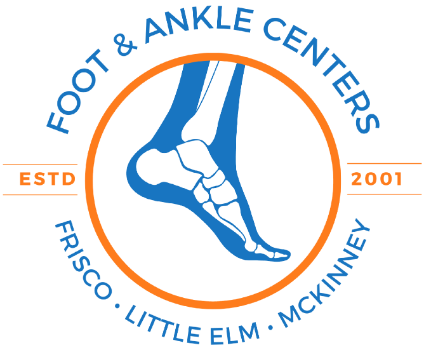What Increases Your Risk for Gout? | Foot & Ankle Centers
Sep 15, 2025 | By: Foot & Ankle Centers of Frisco, Little Elm, McKinney
Gout is a common form of arthritis that causes sudden, intense pain and swelling in the joints, often starting in the big toe. This condition can lead to chronic discomfort and complications if left unmanaged. Understanding what causes gout and how to manage it is essential to prevent flare-ups and maintain joint health. In this guide, we’ll explore the causes, risk factors, symptoms, and treatment options for gout. Whether you’re experiencing symptoms or just want to learn more, this post will help you take control of your health.
What is Gout?
Gout is a type of arthritis causing sudden pain, swelling, and redness in joints due to uric acid crystals. These crystals form when excess uric acid, a waste from breaking down purines in certain foods and drinks, builds up in the bloodstream instead of being properly eliminated by the kidneys, often affecting the big toe.
Our doctors at Foot & Ankle Centers in Frisco, McKinney, and Little Elm are experts in diagnosing and treating gout, offering personalized care to help manage symptoms and prevent flare-ups.
The Science Behind Gout: Uric Acid and Crystals
When your body produces too much uric acid or can’t get rid of it effectively, the acid forms sharp crystals in the joints. This condition is known as hyperuricemia. These crystals cause inflammation, pain, and the swelling typically seen in a gout flare-up, most often in the big toe, a condition called podagra.
How Uric Acid Levels Increase
Several factors contribute to higher uric acid levels in the body:
-
Diet: High-purine foods like red meats, organ meats, and seafood can raise uric acid levels.
-
Alcohol: Beer and other alcoholic beverages can increase uric acid production and hinder its elimination.
-
Obesity: Extra body weight can lead to more uric acid production and make it harder for the kidneys to remove it.
-
Dehydration: Not drinking enough water makes it harder for the body to flush out uric acid.
-
Medications: Diuretics and some medications used to treat high blood pressure can increase uric acid levels.
-
Health Conditions: Diabetes, kidney disease, and hypothyroidism can affect how your body handles uric acid.
Risk Factors for Gout
There are several risk factors for gout. Here's the most common:
-
Dietary Habits: A diet rich in red meat, shellfish, and alcohol increases gout risk.
-
Obesity: Higher body weight leads to more uric acid production.
-
Genetics: Family history of gout can raise your risk.
-
Age and Gender: Gout is more common in men, particularly over the age of 30.
-
Certain Medications: Diuretics and other medications can contribute to elevated uric acid levels.
-
Underlying Health Conditions: High blood pressure, diabetes, and kidney disease increase your chances of developing gout.
Symptoms of Gout
Gout attacks are often sudden and include the following symptoms:
-
Intense Joint Pain: Often in the big toe, but it can affect other joints.
-
Lingering Discomfort: Pain persists even after the initial intense attack.
-
Swelling and Redness: The affected joint appears swollen, warm, and red.
-
Limited Range of Motion: The joint may be stiff and difficult to move due to pain.
How is Gout Diagnosed?
To diagnose gout, a doctor, such as those at Foot & Ankle Centers, will review your medical history, symptoms, and lifestyle.
Common diagnostic methods include:
-
Joint Aspiration: A fluid sample from the affected joint is examined for uric acid crystals.
-
Blood Tests: Measures uric acid levels, though high levels don’t always indicate gout.
-
Imaging: X-rays or ultrasound may show joint damage or visible uric acid crystals. Foot & Ankle centers offer in house diagnostics at all three locations.
How to Manage Gout
Effective management of gout includes lifestyle changes, medication, and preventive strategies:
-
Dietary Changes:
-
Limit Purine-Rich Foods: Cut back on red meat, shellfish, and organ meats.
-
Stay Hydrated: Drink plenty of water to help eliminate uric acid.
-
Avoid Alcohol and Sugary Drinks: Reducing alcohol and sugary beverages can lower gout risk.
-
-
Weight Management: Losing weight gradually can help lower uric acid levels and prevent flare-ups.
-
Medications:
-
NSAIDs: Nonsteroidal anti-inflammatory drugs reduce pain and swelling during an attack.
-
Colchicine: Helps relieve pain during gout flare-ups.
-
Urate-Lowering Therapy: Medications like allopurinol lower uric acid levels to prevent future attacks.
-
Preventing Gout Attacks
To reduce the frequency of gout flare-ups, Foot & Ankle Centers recommends:
-
Consistent Medication Use: Adhere to prescribed medications to control uric acid levels.
-
Maintain a Healthy Diet: Eat a balanced diet low in purines.
-
Regular Check-ups: Stay in touch with your healthcare provider to monitor your condition.
-
Exercise: Regular physical activity helps maintain a healthy weight and lower uric acid levels.
Taking Control of Your Health
Managing gout requires a proactive approach to your diet, weight, and overall lifestyle. By recognizing symptoms early and making smart choices, you can reduce the frequency and severity of gout attacks.
If you’re experiencing symptoms or concerned about your risk for gout, book an appointment at one of our Foot & Ankle Centers locations in Frisco, McKinney, or Little Elm, where Dr. Tavakoli, Dr. Knapp, and Dr. Treleven can help you create a personalized plan to manage and prevent gout.


Leave a comment
0 Comments